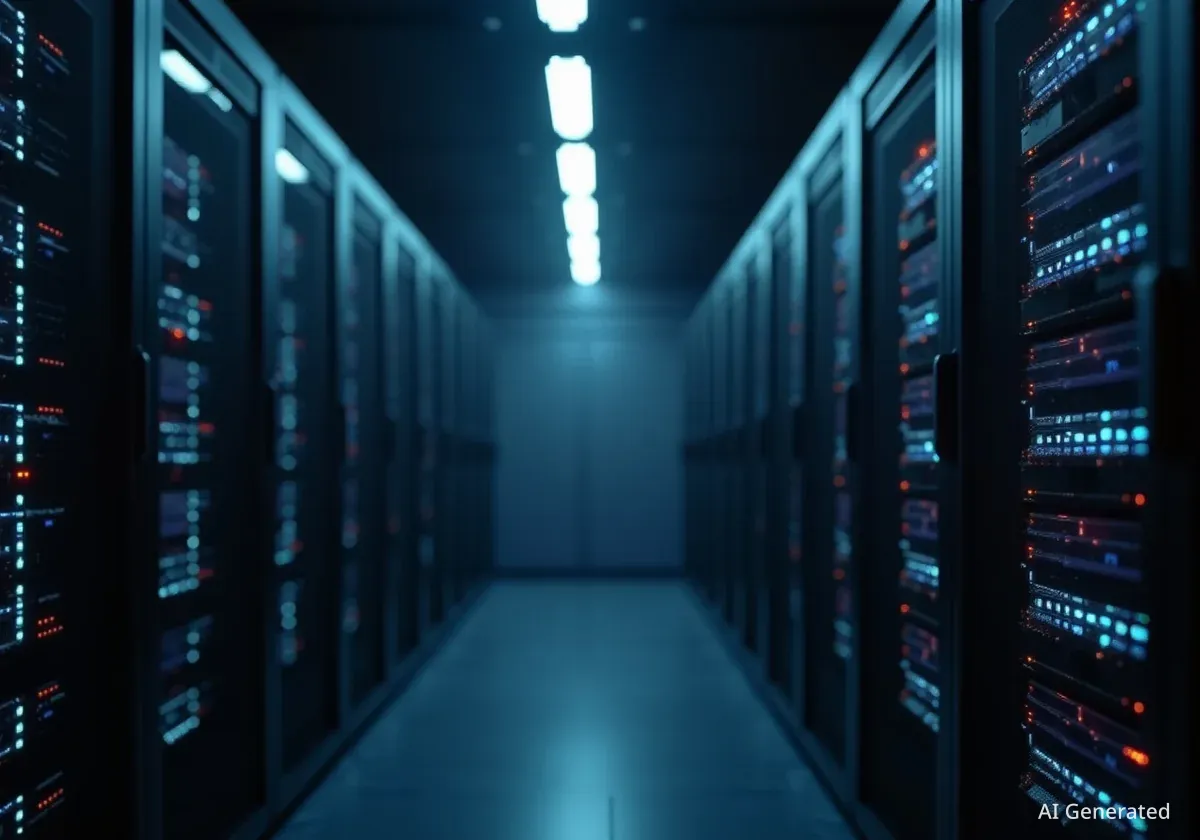As artificial intelligence becomes more integrated into the global economy, its impact on the workforce remains a significant unknown. To address this uncertainty, economists and policy experts are collaborating to develop a range of potential government responses, from workforce retraining to new tax structures, tailored to different scenarios of AI-driven economic change.
AI company Anthropic, in collaboration with its Economic Advisory Council, has compiled and shared nine distinct policy ideas. These proposals are designed to stimulate public discussion and prepare governments for potential shifts in labor markets, wealth distribution, and public revenue.
Key Takeaways
- Economists and policy experts are developing strategies to manage the economic effects of AI.
- Proposals are grouped into three categories based on the potential speed and scale of AI-driven job displacement.
- Ideas range from worker retraining grants and tax reforms to more ambitious concepts like sovereign wealth funds and new taxes on automation.
- The goal is to create a flexible policy toolkit to address various potential economic futures shaped by AI.
Planning for an Uncertain Economic Landscape
The increasing capability of AI systems to perform complex tasks independently is shifting how businesses operate. Data from the Anthropic Economic Index suggests a trend where users delegate entire tasks to AI models, reducing the need for direct human collaboration on those tasks. As this trend accelerates, the consequences for employment and wages are unclear.
To prepare for this transition, a proactive approach to policymaking is considered essential. Experts have organized potential responses into three distinct scenarios, allowing for a scalable approach depending on how AI's economic impact unfolds.
A Three-Tiered Approach to Policy
The proposed policies are not one-size-fits-all. They are categorized to match the severity of potential economic disruption:
- Universal Policies: Foundational ideas suitable for almost any future, even with minimal labor market disruption.
- Moderate-Scenario Policies: More substantial interventions designed for scenarios with noticeable wage stagnation or job losses.
- Transformative Policies: Ambitious, large-scale reforms intended for futures with dramatic economic shifts and widespread job displacement.
Universal Policies for a Changing Workforce
A set of foundational policies has been proposed that could be beneficial regardless of AI's ultimate impact. These ideas focus on strengthening the workforce and the infrastructure needed for economic growth.
Investing in On-the-Job Training
One key proposal is the creation of a Workforce Training Grant. Championed by Abigail Ball and Oren Cass of American Compass, this model would provide government subsidies directly to employers. The goal is to incentivize companies to establish formal trainee positions that include structured, on-the-job training programs.
Under this plan, employers could receive a significant annual subsidy, suggested at $10,000 per trainee in the U.S., to offset the costs of upskilling workers. Funding for such a program could potentially be reallocated from existing higher education subsidies or generated through new taxes on AI consumption.
Reforming Tax Incentives for Employee Retention
Tax codes can inadvertently encourage companies to invest in new technology over their existing workforce. Revana Sharfuddin of the Mercatus Center points out that U.S. tax law often allows businesses to immediately write off investments in AI systems while placing limits on deductions for worker training expenses.
Proposed reforms include removing the current $5,250 cap on tax-free educational assistance for employees and allowing businesses to fully and immediately deduct all job-related training costs. This would make retraining a more financially attractive option compared to layoffs.
The Infrastructure Challenge
Building the necessary infrastructure for advanced AI, including data centers and power generation facilities, is often delayed by years due to regulatory hurdles. For example, connecting new generation resources to the U.S. electric grid can take four to six years on average.
Streamlining AI Infrastructure Development
The physical backbone of the AI economy requires massive investment in data centers, energy generation, and transmission lines. However, complex permitting processes frequently cause long delays. Experts advocate for reforms to accelerate these approvals, arguing that failure to do so could slow productivity growth and create national security risks if critical infrastructure is built offshore.
"I am all for permitting reform—the energy sector included," stated Tyler Cowen, faculty director of the Mercatus Center, highlighting the broad support for streamlining these processes.
Policies for Moderate Economic Disruption
If AI adoption leads to measurable job losses and wage declines for a significant portion of the population, more direct support systems may be necessary. The following policies are designed for such a moderate-impact scenario.
Adapting Worker Assistance Programs for Automation
The U.S. Trade Adjustment Assistance (TAA) program, which helps workers who lose their jobs due to foreign trade, could serve as a model for AI-related displacement. Ioana Marinescu of the University of Pennsylvania describes a similar concept of "AI insurance" to support those affected.
Researchers Suchet Mittal and Sam Manning have outlined a potential Automation Adjustment Assistance (AAA) program. It could start with funding levels similar to the TAA, around $700 million annually, and be designed to scale up if displacement becomes more widespread. Funding could come from taxes on AI-driven revenue from large technology companies.
Considering New Taxes on AI Activity
To offset the societal costs of automation and fund support programs, economists are studying taxes on AI itself. University of Virginia economists Lee Lockwood and Anton Korinek have proposed taxes on various aspects of AI, such as the generation of AI tokens or the use of computational resources (compute).
A "token tax" could be applied to AI-generated content sold to users, while a tax on compute could target the resources AI systems use. While these taxes could impact AI companies' profits, they are seen as a potential mechanism to ensure the gains from automation are more broadly shared.
Ambitious Reforms for a Transformed Economy
In a future where AI leads to dramatic job losses and rising inequality, policymakers might need to consider more fundamental changes to the economic system. These ideas are more ambitious and designed for a profoundly different economic reality.
Sovereign Wealth Funds for Public Stake in AI
One proposal involves creating national sovereign wealth funds that would acquire ownership stakes in AI companies and related assets. This would allow governments and citizens to share directly in the economic returns generated by AI. By holding these stakes, governments could also influence the AI sector's development and ensure that wealth is distributed more equitably.
In the United Kingdom, a related idea for an "AI Bond" has been proposed by the Centre for British Progress to fund investment in the nation's AI infrastructure and distribute the returns across the country.
Modernizing National Tax Systems
As AI contributes more to economic value, the share of value produced by human labor may decline. This could strain government budgets that rely heavily on income and payroll taxes. A shift toward taxing consumption through a Value-Added Tax (VAT) is one potential solution. The United States is the only G7 country without a VAT.
"Value-added taxes are non-distortionary and to an extent, self-enforcing," noted John Horton of MIT's Sloan School of Management.
Another idea, from tax expert David Gamage, is a low-rate business wealth tax to complement income taxes. He argues that using both systems makes tax avoidance more difficult for highly profitable companies, ensuring a stable revenue stream for governments as the nature of economic production changes.
Fostering an Ongoing Dialogue
These nine policy proposals are not final recommendations but rather starting points for further research and public debate. The true economic effects of AI are still unfolding, and different futures will demand different responses.
To advance this conversation, Anthropic has committed $10 million to its Economic Futures Program, which funds research and convenes experts to discuss these critical issues. Proactive collaboration between researchers, policymakers, and the AI industry is seen as the best way to prepare for a range of possible outcomes and ensure that the benefits of AI are broadly shared across society.





